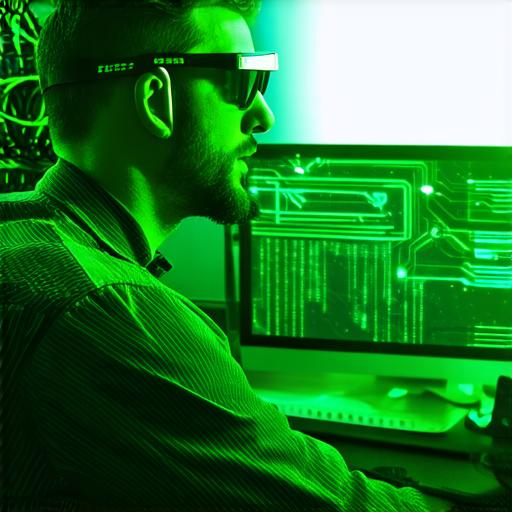Augmented Reality (AR) Technology: Negative Effects and Mitigation Strategies
Augmented reality (AR) technology has come a long way since its inception. From gaming to healthcare and retail, AR is now being used across various industries to enhance the user experience.
The Risks of AR
AR technology can be extremely distracting, causing people to lose touch with their surroundings. This could lead to accidents or injuries, especially when used in high-risk environments such as construction sites, hospitals, and busy streets.
For example, a construction worker using an AR headset may not notice a falling object or a change in the environment around them, leading to serious consequences.
Addiction and Dependency
AR technology can be highly addictive, leading people to spend hours exploring virtual worlds instead of engaging with reality. This could lead to social isolation, anxiety, and depression, especially when used excessively.
In some cases, addiction and dependency on AR technology could also impact a person’s productivity and mental health.
Privacy Concerns
AR technology can be used to track people’s movements and interactions in real-time, raising privacy concerns. For example, an AR app that tracks users’ shopping behavior could be used by retailers to target them with personalized ads or manipulate their purchasing decisions.
Additionally, the use of facial recognition technology in AR applications raises ethical concerns about data collection and surveillance.
Technical Limitations

AR technology is still in its early stages, and there are many technical limitations that need to be addressed. For example, the accuracy and reliability of AR sensors can be affected by factors such as lighting conditions and user movements.
Additionally, the processing power required for AR applications can be expensive and require high-end hardware.
Mitigating the Risks
Safety Protocols
To mitigate safety concerns, it is essential to implement safety protocols when using AR technology. This could include providing users with training on how to use the technology safely and ensuring that the technology is used only in appropriate environments.
Additionally, developers can design safety features into the AR application, such as alerts for changes in the environment or warnings about potential hazards.
User Control and Privacy
To mitigate privacy concerns, it is essential to ensure that users have control over their data and that they are informed about how their data will be used. This could include implementing strong encryption protocols and providing users with the ability to opt-out of data collection.
Additionally, developers can design AR applications to minimize the use of facial recognition technology or other invasive surveillance methods.
Technical Improvements
To mitigate technical limitations, it is essential to invest in research and development to improve the accuracy and reliability of AR sensors. Additionally, developers can optimize their AR applications to reduce processing power requirements and make them more accessible to a broader range of users.
Case Studies
Pokemon Go
Pokemon Go, the popular augmented reality game, demonstrated both the potential and risks of AR technology. On one hand, the game was incredibly engaging and encouraged people to explore their surroundings. However, on the other hand, it caused safety concerns as users became so absorbed in the virtual world that they lost touch with reality.
IKEA Place
IKEA Place is an AR app that allows users to visualize how furniture would look in their home before purchasing it. The app was highly successful and demonstrated the potential of AR technology for e-commerce. However, it also raised privacy concerns as users had to provide personal information about their homes to use the app effectively.
Snapchat Filters
Snapchat filters are an example of how AR technology can be used in a fun and creative way. The filters are popular among young people and have been credited with driving the growth of AR technology. However, the app also raised concerns about addiction and dependency on social media.
